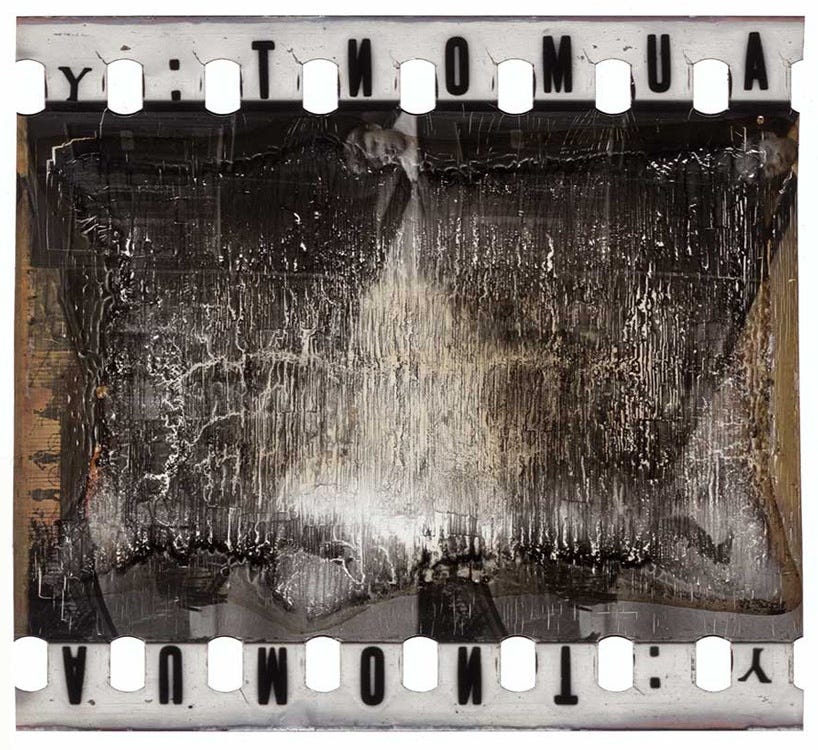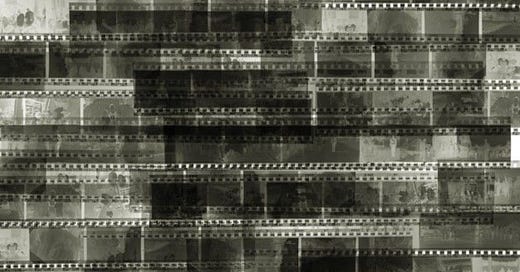The art of lost & cursed media
Lost media in the digital age & cursed media as a macabre love letter
Lost media & accessibility in the digital age
The unknown and unseen have long since been staples of the horror genre. The horror is in the implications, what your mind fills in the blanks with. Lost media in horror uses the unknown as a central theme, creating certain circumstances around it that push it further into this dark corner that our protagonists tread into.
House of Leaves by Mark Z. Danielewski begins with the death of a man who wrote an academic review that details a documentary, entitled The Navidson Record, about a house that is bigger on the inside than it is on the outside. The Navidson Record, however, does not exist, as our main character discovers. House of Leaves would not be nearly as effective in its horror if The Navidson Record did exist. It is precisely that lack of record, of solid knowledge and ability to see, to discern, to analyze, that makes it effective.

As technology becomes more and more prevalent in our lives, these lost media horror pieces are under another layer of unknowability: they exist within this era of accessibility and yet are still inaccessible.
In a world where nearly everything is accessible and for the most part instantly, the obscurity of something inaccessible creates a specific condition that it exists in—an abstract place, if you will—and these particular media pieces utilize this as a place from which terror spawns. More specifically, they use the circumstance of being aware of the lost media and not being able to fully access it. The main character in House of Leaves knows of The Navidson Record, but cannot ever watch it. This is the abstract place I am attempting to illustrate: between knowing of and knowing entirely. In the age of accessibility, that place is rare, and in part because of this, it is rife with horror.
I believe this reflects a more wide-spread, comprehensive fear that media is being lost in the digital age with more ease than ever. At any point, something can be taken off the internet, and if there are no physical remnants of it, it is gone for good. This fear seems to be parallel to the overtaking and control of media that larger media presences have over the internet and all its content. This is not an exhaustive statement, of course; there are layers of the internet, after all, but I do believe this collective fear influences the lost media corner of horror, and as such it reflects the state of the world to some extent.
Cursed media as a macabre love letter to art
The concept of some pieces of media being cursed is tied mostly to it being cursed throughout time; carrying a curse of some sort to those that view it. Either it is the piece of media itself that is supposedly cursed—the movie Antrum is subtitled The Deadliest Film Ever Made, and while it is a decent horror movie, I can report it will not kill you if you watch it, as it claims to— or about characters that interact in some way with a cursed piece of media—Ringu, the original Ring movie, follows a journalist investigating a tape that kills people seven days after they watch it—but the second type is more prevalent.
In John Carpenter's Cigarette Burns, one character says:
“Once you start this, you can’t just shake it off and walk away. It gets inside you.”
In context, it is a terrifying line, but taken at face value, it speaks to how pieces of media have this ability to change someone. This notion of a piece of media driving someone insane or having profound effects on someone is, in one way or another, tied to the way that films and books and media elicit such deeply felt emotions. Particularly, when this is reversed and the media creates distressing emotions, it can be seen as a macabre love letter to art.
Art evokes such strong reactions because it is deeply human, and the cursed media trope is another way of expressing this. In The King in Yellow by Robert Chambers, the titular play supposedly drives people mad if they read it. The madness contained and expressed in the play can be seen as the reverse of a piece of art that makes someone feel, say, incredibly joyful. It is the same core premise: how art affects those who come into contact with it.
In the show Deadwax, a woman is hired to find a record that supposedly contains the sound of death, and listening to it results in just that, death. She discovers that there are three ‘key’ records that one must listen to simultaneously before the final one. The markings on the deadwax of the record—the space between the label and the grooves—cause it to kill anyone who listens to it. It is, essentially, the same concept, but within music: the notion that a piece of music can act as a conduit for something that leaves the listener irreversibly changed in one way or another.
In this way, the cursed media trope expresses a deep appreciation for art, its connectivity to emotional states, and its ability to both contain and express them.
From another perspective, many of these cursed media pieces are firmly in their original place in time; in order to maintain their ability to affect those who come into contact with it, they must be engaged with in their original contexts. This is parallel to what Walter Benjamin touches on in The Work of Art in the Age of Mechanical Reproduction:
“The uniqueness of a work of art is inseparable from its being embedded in the fabric of tradition.”
In brief, he posits that when art is mechanically reproduced, it loses something essential, what he calls its ‘aura’, that is unique to its place in time and original context in which it was produced. It's a fascinating read, but here I want to talk about this one component of it and how it relates to cursed media.
Cursed media revolves around and often depends on its specific place — I will use place to mean context, place in time, space, etc—and the cursed aspect of it cannot be separated from its place.
In Silver Nitrate by Silvia Moreno-Garcia, our main characters track down an old, unfinished movie that is said to have cursed those in the production because it is unfinished; it is essentially a curse or spell imbued into the movie that is left incomplete. The movie’s place is integral to its cursed aspect; the director, the silver nitrate film that it was made on, and the time it was made in, all come together to create this cursed piece of media, or its ‘aura’. It is inseparable from its original context in which it was made, and in this case, in which it was cursed.

This feeds into the notion that cursed media expresses admiration for art and especially in its original context. A replica is untethered from its original’s historical, emotional, political place, and so on and so forth, and thus it loses something essential: its ‘aura’, or, the very thing that is being appreciated (or part of it).
Further reading: This essay which explores how cursed media expresses a wider, societal fear of the influence media exerts over people, and how many cursed media movies are products of their time, among other topics.
“It is clear that moral panics in different forms, even though they might have changed, will rise up repeatedly as a historical pattern and that media continues to be one of the instances who awaken these panics recurrently.”
Lost & cursed media in media
Mentioned in this post:
House of Leaves by Mark Z. Danielewski
Silver Nitrate by Silvia Moreno-Garcia
The King in Yellow by Robert Chambers
Antrum Dir. David Amito & Michael Laicini
Ringu Dir. Hideo Nakata
Cigarette Burns Dir. John Carpenter
Deadwax Dir. Graham Reznick
Not mentioned in this post, but still recommended:
Archive 81 Dir. Rebecca Thomas et al.
Ninth Gate Dir. Roman Polanski
Backwoods Dir. Ryan Mackfall
Videodrome Dir. David Cronenberg
The Glamour and Vastarien by Thomas Ligotti
Flash Frame by Silvia Moreno Garcia
On my list:
Experimental Film by Gemma Files
The Devil’s Playground by Craig Russell
Black Circle Dir. Adrian Garcia Bogliano
That’s all for now, take care of yourself & I want to hear your thoughts as always!









I love the depiction of cursed media especially music in media. In one of my favorite anime Hunter x Hunter, a character is searching for the Sonata of Darkness to destroy it. It is said that the Sonata was written by the devil himself and when her friend played just the flute solo of the Sonata, she was horribly disfigured and that friend died gruesomely. She's a small character but I found her portrayal absolutely fascinating.
an insane concept that i’ve never ever thought about but you’ve now put on my radar!! also love the recommendations, i’m so interested to check them out esp the cronenberg film